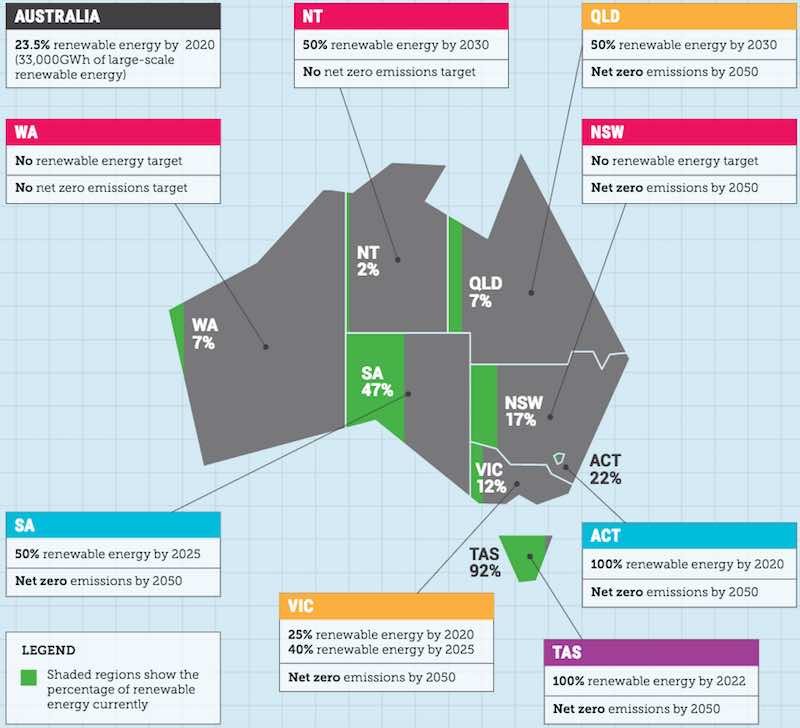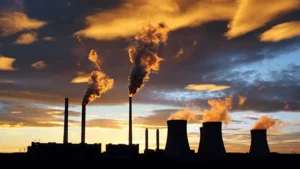The lead role Australia’s state and territory governments are increasingly taking in the nation’s shift to renewable energy – in the complete absence of any long-term policies at the federal level – is the subject of a new report from the Climate Council – along with some pretty neat graphs and charts showing which state is doing what, and how fast.
As the report notes, and the 2017 score card below shows, all of Australia’s states and territories – with the exception of Western Australia – now have strong renewable energy targets and/or net zero emissions targets in place.
In other words: Western Australia is now the only state or territory in Australia without a target for renewable energy or net zero emissions.
Over the last year, it says, Victoria (40% by 2025), the Northern Territory (50% by 2030) and Tasmania (100% by 2022) have put in place strong new renewable energy targets, while New South Wales, Tasmania, Queensland and Victoria have all adopted targets for net zero emissions by 2050.
But who is walking the walk? South Australia, of course, is the clear front-runner on renewables, according to the Climate Council scoring system, which ranks the states and territories based on a number of factors, including the scope of their targets, their percentage of installed renewable electricity generation, their number of solar households, and their progress on all of the above over the past 12 months.
SA is followed by ACT and Tasmania, who are neck and neck. Then come Queensland and Victoria, who are listed as playing catch-up. New South Wales, Western Australia and the Northern Territory, meanwhile, remain “at the starting blocks” – although the report notes that NSW (alongside Queensland) has the greatest capacity and number (respectively) of large-scale wind and solar plants under construction in 2017.
Most improved states and territories was awarded to NSW and the NT, which the Climate Council said had “seen the most dramatic positive shift in policy support for renewable energy and emissions reductions” since its 2016 report.
“Within the last year, all Australian states and territories except Tasmania have increased or kept constant their proportion of electricity from renewable energy,” the report says, and are now turning their focus to energy storage to facilitate the shift to higher levels of renewables.
So much so, they will wind up doing most of the heavy lifting on the federal government’s own, rather conservative, climate targets.
“State and territory targets, plus existing and announced coal closures (such as Liddell Power Station) are expected to deliver the federal government’s 2030 emissions reduction target of 26-28 per cent reduction on 2005 levels, even without any action from the federal government,” the report says.
But that is not to say the federal government should be let off the hook. In comments at the launch of the report on Thursday, Climate Councillor Andrew Stock, who co-authored the report, stressed that leadership on renewables at a federal level remained crucial to Australia’s progress in decarbonising its energy sector.
“(A federal clean energy target) would be the icing on the cake,” said Stock. “Paris is a commitment that goes beyond 2030. We need to be able to take our electricity sector emissions to zero well before 2050.
“If we don’t get a federal strategy in place, backed by a Clean Energy Target, we’re not going to see continued investment (in renewables),” he said.










